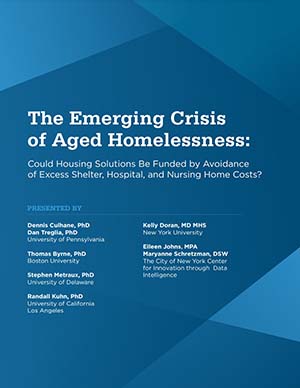Addressing Increasing Number of Older People Experiencing Homelessness

The surge in the post-War Baby Boom population combined with increasing economic insecurity, decades of underfunding the social service safety net, and the rising costs of housing all contribute to increasing numbers of older people experiencing homelessness, and the trend is accelerated by a global pandemic that makes it harder to make ends meet.
When the City of Seattle and King County voted to set up the Regional Homelessness Authority, which I am privileged to lead, it was with the recognition that, as a community, we need to do something different. That’s why the Authority exists—to consolidate and coordinate fragmented policies and programs, align strategy across Seattle and other cities in King County, and design and implement a more effective system. Systems change fundamentally alters structures and practices to get a different result.
Right now, the Authority is redesigning our homeless response system, based on better data, best practices, equity, and social justice principles, and centering the people that the system is meant to serve— including our aged population.
At the beginning of 2022, the Authority will take responsibility for over 200 city and county contracts with shelters, service providers, and outreach workers. One of our priorities is to invest in peer navigation, ensuring that outreach to encampments is led by people who know what it’s like to experience homelessness and who bring that experience as an asset in navigating social services. Another priority is to support cities outside of Seattle in providing more comprehensive services, so that people experiencing homelessness or housing instability in other parts of King County can find what they need in their own communities.
We also want to expand dedicated services for people who have more acute medical needs. We’re looking at decommissioned nursing homes as places that could be converted to shelter or housing, and acquisition of multi-bedroom neighborhood houses that could be staffed with medical professionals.
Based on research looking at aged homelessness in New York, Boston, and Los Angeles, we expect that 85 percent of the population could be well served with rental subsidies and light case management, about 12 percent would require the additional care of Permanent Supportive Housing (PSH), and another three percent would need PSH plus additional supports like palliative care. Investing in these housing-first interventions saves money by offsetting what would otherwise be higher costs in homeless shelters and emergency medical care.
Solving homelessness requires us to work together in a different way—taking a regional view, leading with relationships, and recognizing that government is only what we agree to do together. By planning together now, we can make sure that the service system is prepared to meet the needs of all our aging neighbors.
 Contributor Marc Dones is the first CEO of the King County Regional Homelessness Authority. Learn more at www.kcrha.org.
Contributor Marc Dones is the first CEO of the King County Regional Homelessness Authority. Learn more at www.kcrha.org.
![AgeWise King County [logo]](https://www.agewisekingcounty.org/wp-content/themes/agewisekingcounty/images/logo.png)
